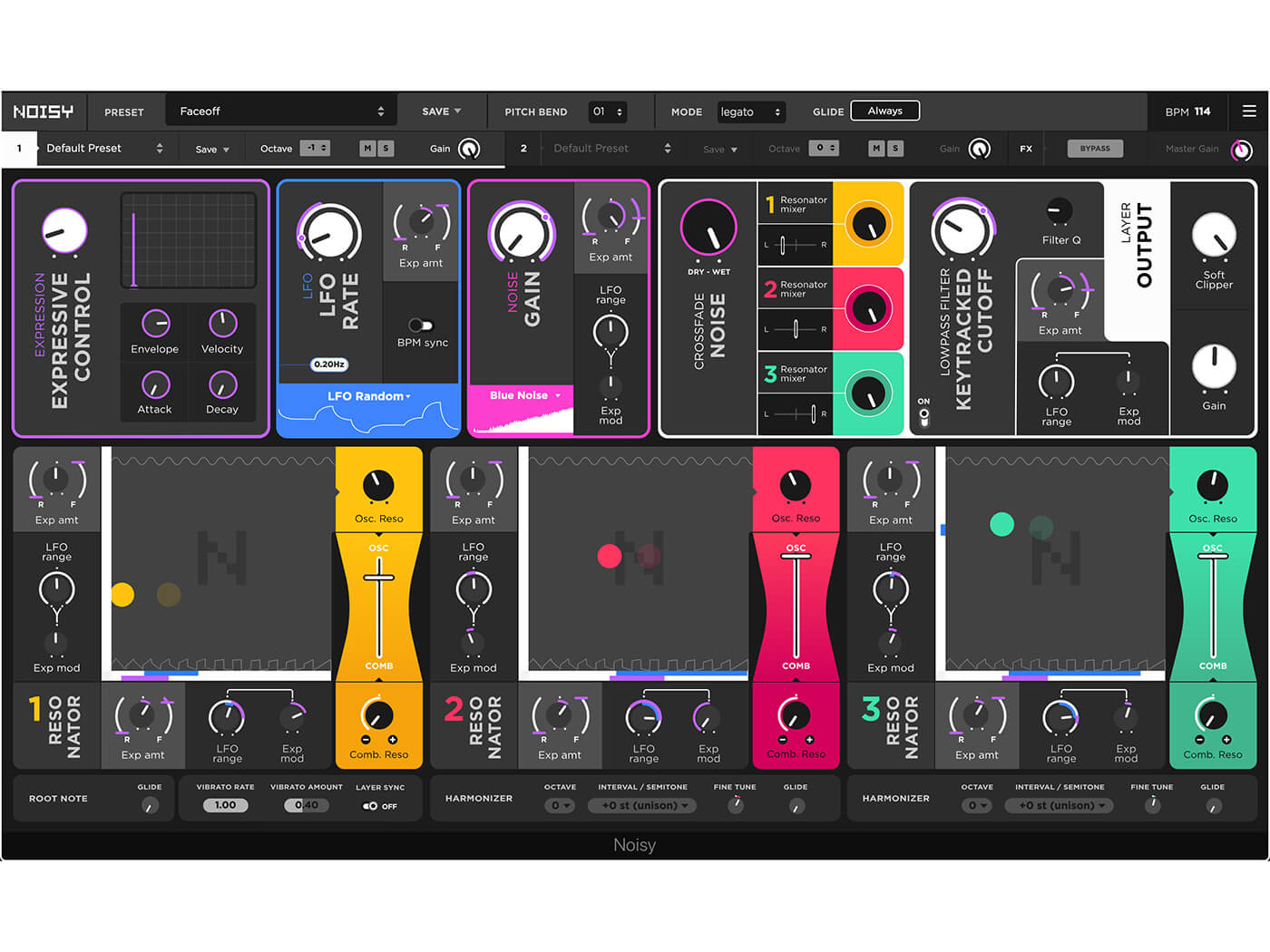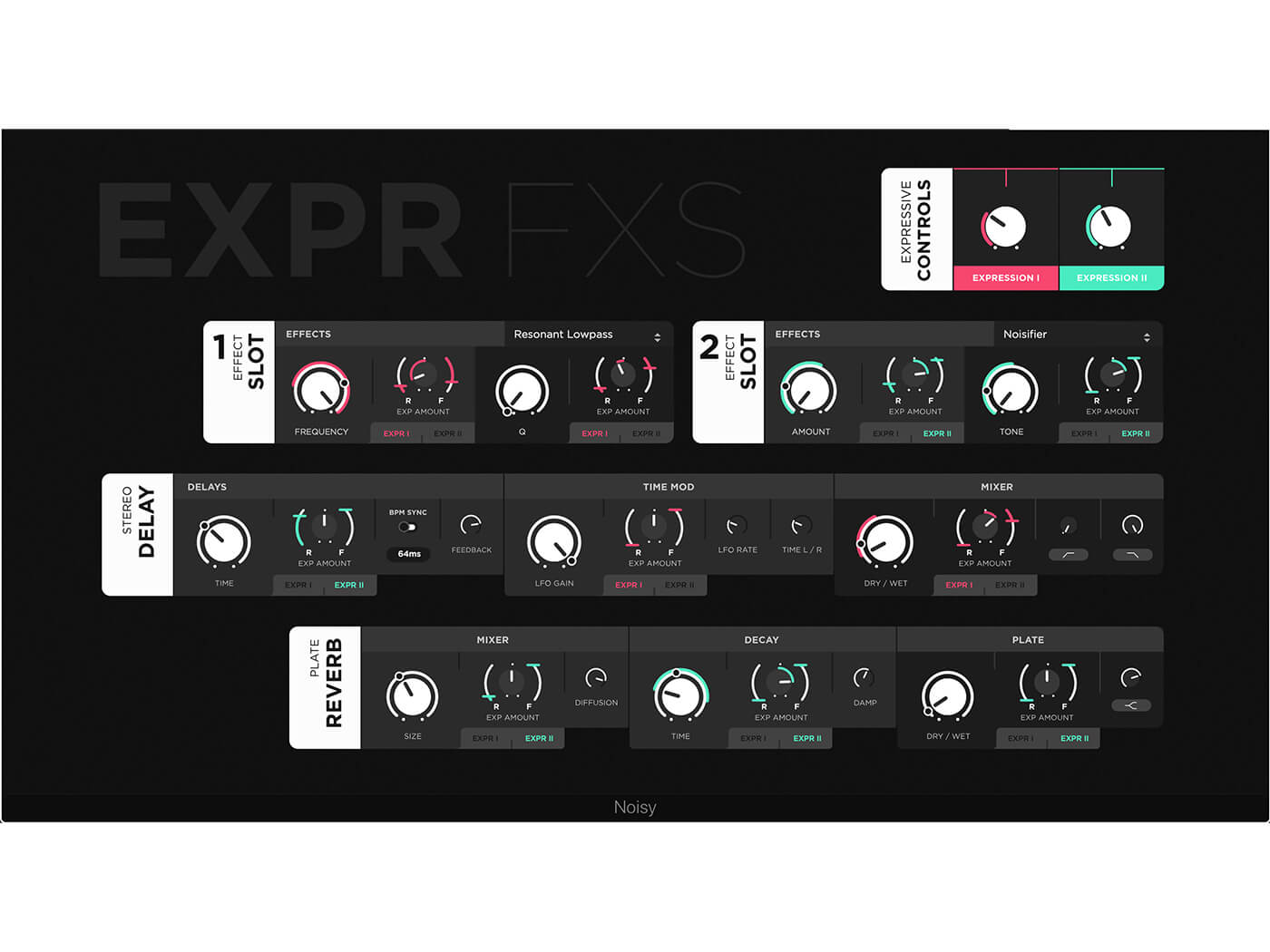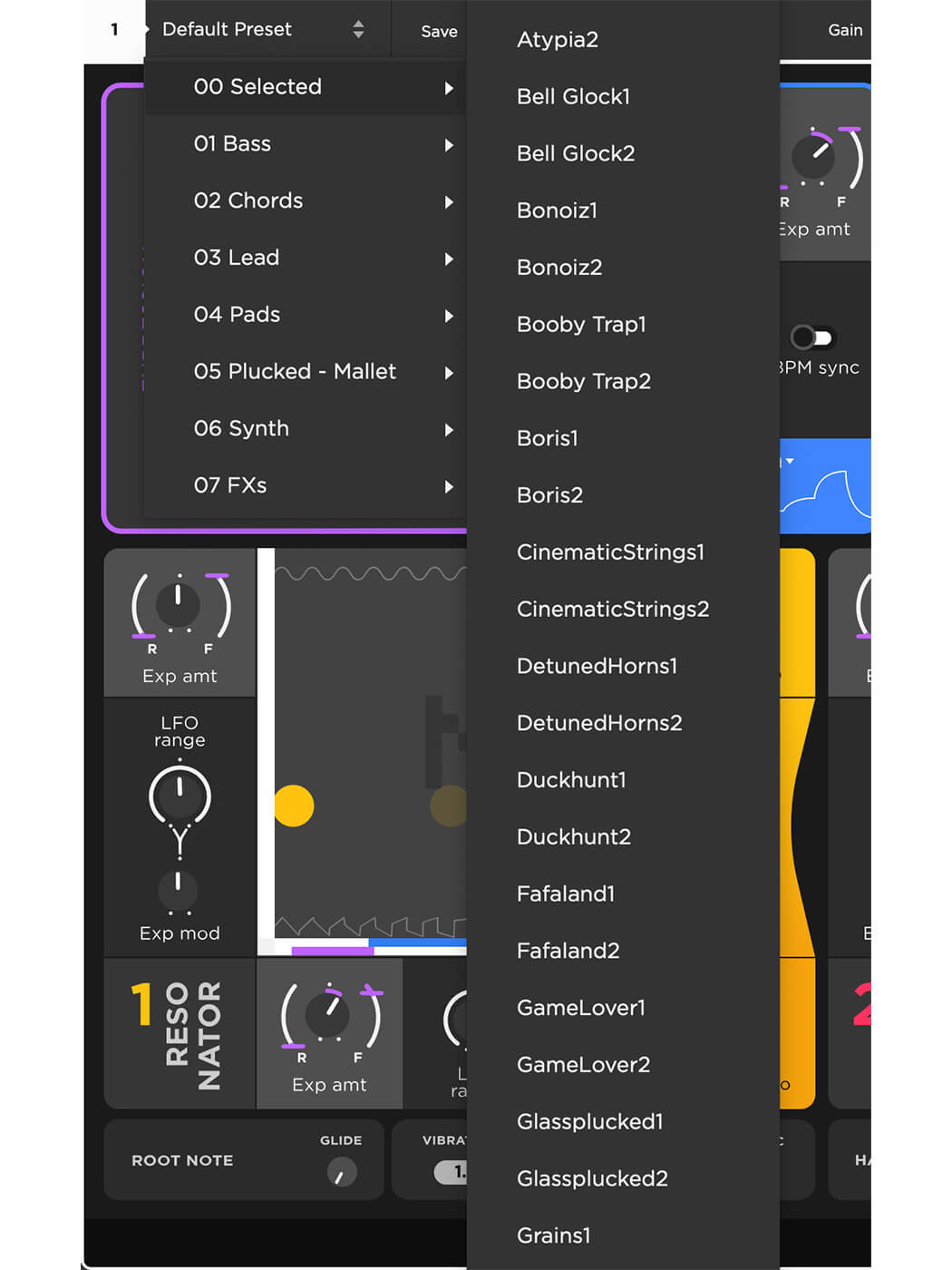Review: Expressive E Noisy
What happens when physical modelling and subtractive synthesis produce a soft synth lovechild? We welcome Expressive E’s Noisy.


Price €149
Contact Expressive E
Noisy is the first dedicated soft synth to be developed by French company Expressive E. If the name is familiar, it’s likely because of Touché, the company’s unusual, multi-dimensional desktop hardware controller, designed to bring more musical control to software instruments and hardware synths.
Noisy is a software instrument that mimics the natural resonances and behaviours of acoustic sound. To understand how it works, imagine a string being plucked or strummed. First, you need an impulse to set it in motion, and after that, an understanding of how it behaves as it oscillates back and forth along its length. Noisy isn’t the first physical modelling synth – Logic Pro’s Sculpture and Live’s Tension are two native DAW examples. Still, Noisy’s most potent trick is combining physical modelling with subtractive synthesis for sound generation.
Resonators
The impulse trigger in Noisy is a noise generator. Think of this as a full-frequency sonic gesture that sets Noisy’s ‘virtual string’ into motion. There are four flavours of noise available to perform this task – velvet noise, pink noise, white noise and blue noise. Your chosen impulse then triggers three resonators, each of which features independent synthesis and physical modelling engines. This means that each one can either behave like an acoustic string or more like a regular synthesised oscillator waveform.
Better yet, you can blend between subtractive and physical modelling engines with a crossfader to produce surprising and unique hybrid sounds.
To understand this better, look at the yellow ‘Root’ resonator in the bottom left-hand corner. On its right-hand side, you’ll see a vertical slider with the synthesised ‘Osc’ at the top and the physical modelling behaviour controlled via a ‘Comb’ filter as labelled at the bottom. For the latter, the Comb Reso dial moves between odd and even harmonics, mimicking the behaviour of purer, harp-like sounds to the left and richer, guitar-like ones to the right.
You can then explore the combined harmonic potential of your Osc Reso and Comb Reso choices by moving the yellow dot around the virtual X/Y pad to the left. However, moving the dot manually is rather mundane. It’s far more exciting to get your sounds moving with the top-row Expression and LFO modules, which are the main disruptors-in-chief.
Expression (top left in purple) provides a basic envelope shape with attack and decay times, and an option to link the envelope’s behaviour to velocity. The envelope dial controls expression strength. The master Expressive Control dial then selects how deeply this envelope will impact Noisy’s parameters. Turning the Exp Amt dial in any of the modules will introduce the envelope’s behaviour. This control is easy to identify in other areas of the plug-in – just look for the purple.
The LFO works similarly; choose from one of five shapes and then decide where to assign modulation. As you’d hope, these disruptors can work interdependently, so if you want the envelope to control how widely the LFO will wobble, use the Expression Amount in the LFO. Each assignment also offers independent Rise and Fall sliders, letting you exaggerate the default envelope shape to extend attack and decay behaviours.

Layers and FX
So far, that explains one of Noisy’s resonators, but there are three for each sound layer and two sound layers in total. The combined synthesised/physical modelling response is available six times across any sound via one Root Note and two Harmonizer modules per layer.
Noisy also offers a key-tracked low-pass resonant filter, a mixer section to determine the level and pan position of the three Resonators in each sound layer and a soft clipper (limiter) in its output section.
Above this is the FX button which launches a dedicated page for effects. This breaks into four main sections with two effects slots, plus dedicated delay and reverb. For slots 1 and 2, there are 11 effects types available. Among them are time-based modulation effects (chorus, flangers, phasers), a wickedly raspy Ring Modulator and Distortion.
Two dedicated Expression dials in the top right-hand corner can be assigned into each effect module, too, for further control. You can turn all this off with a global FX bypass button at the top of this page, but we’d prefer each module’s white label tab to act as a bypass button in its own right. This behaviour would save having to change effects types to ‘None’ or turn Dry/Wet dials down to zero to mute any unwanted effects.
Pluck me
Noisy’s presets are extensive, and they provide an impressive showcase for the depth of sound available. Basses are consistently rich, with a colour and weight in the Decay phase, which is immediately different to exclusively waveform-based synths. Pads can be hollow and ethereal or fizzy and more penetrating. Again, what sets these sounds apart is how they evolve.
If you’re looking for sounds that can be unstable and unpredictable, Noisy is awash with options. But it’s the more obviously modelled sounds that shine through, best exemplified by sounds in the Plucked-Mallet preset folder. We got lost for hours here, marvelling at the natural response and musicality of sounds which are brilliantly not-quite marimbas, kotos, harps, guitars and broken pianos. This isn’t a sample library of ‘photo realistic’ instruments but a synthesised/physically modelled approach that offers genuinely fresh and unexpected sounds.
With Expression E’s history in tactile controllers, it will come as little surprise to learn that Noisy is pre-mapped to work with Touché and that it’s a marriage made in heaven. The symbiotic relationship is perfect; Touché makes Noisy more musical and vice versa. However, a comprehensive eight-layer controller map feature is offered (with MIDI learn) to facilitate the assignment of Noisy’s parameters to your existing controller too.
One downside is that the interface is rather busy, and it’s easy to overlook some parameters at first glance. We’d like the GUI to be scalable beyond the provided 80-120% range to remedy this. The only other negative is that preset-browsing is much slower than synthesis-only virtual instruments. Expect to wait three seconds or so upon selecting each sound, which can become time-consuming when you’re seeking quick inspiration.
Otherwise, we thoroughly recommend Noisy, as it dares to offer sound design in a hybrid, unusual way which produces correspondingly unique sounds. We know of nothing else quite like it.

Key Features
- Combines physical modelling and subtractive synthesis
- Pairs perfectly with Touché and well with other controllers
- Over 400 excellent and extensive presets
- Expression and LFO mod options evolve sound in rich and unexpected ways
- Onboard effects are modulatable, making them ‘performable’
- Intuitive design and colour-coding greatly assist workflow